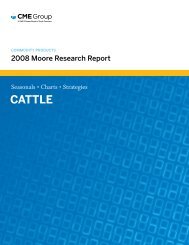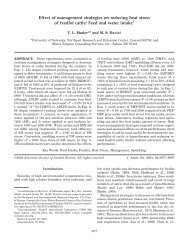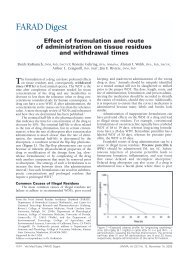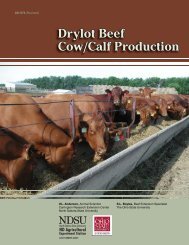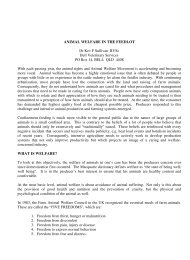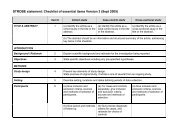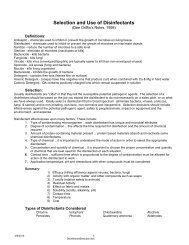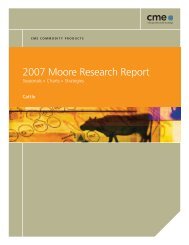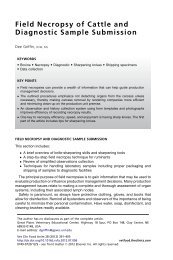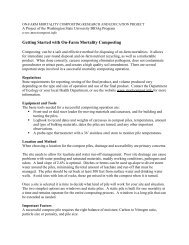CRIMES WITHOUT CONSEQUENCES - gpvec
CRIMES WITHOUT CONSEQUENCES - gpvec
CRIMES WITHOUT CONSEQUENCES - gpvec
Create successful ePaper yourself
Turn your PDF publications into a flip-book with our unique Google optimized e-Paper software.
11. 1 Federal Law<br />
•<br />
•<br />
•<br />
Crimes Without ConsequenCes<br />
Finding #1:<br />
The federal humane slaughter law and its regulations fail to provide protection<br />
to the majority of animals slaughtered for food in the United States. The law has<br />
not been applied to birds (chickens, turkeys, etc.) and rabbits, and while humane<br />
handling is required for the ante-mortem treatment and slaughter of exotic animals<br />
(reindeer, elk, deer, antelope, water buffalo and bison), government inspection of<br />
the slaughter of these animals is only voluntary. While the USDA has indicated that<br />
it expects custom exempt establishments to meet humane handling and slaughter<br />
standards, current regulations do not require compliance.<br />
Recommendation:<br />
The law and/or its regulations should be amended to cover all animals slaughtered<br />
for food under federal jurisdiction. The USDA and state departments of agriculture<br />
should pursue federal or state inspection of mobile slaughtering companies to<br />
encourage on-farm slaughter and thereby eliminate the stress of loading and<br />
unloading and transport on the animals.<br />
Finding #2:<br />
Ritual slaughter is provided an exemption from the requirement of the federal<br />
humane slaughter law that animals be stunned prior to cutting. In addition, animals<br />
undergoing ritual slaughter may be shackled and hoisted while conscious.<br />
Recommendation:<br />
The ritual exemption should be modified to require upright restraint of animals<br />
prior to cutting. Handling in the restraint devices should be monitored and required<br />
to meet the same criteria as standard stun boxes and restrainers. The organizations<br />
responsible for certifying ritual slaughter should provide appropriate training<br />
and evaluation of the slaughter process to assure that it is performed swiftly and<br />
efficiently, without animal suffering.<br />
Finding #3:<br />
Current regulations under the Humane Methods of Slaughter Act are inadequate to<br />
prevent a number of reoccurring instances of inhumane handling and slaughter at<br />
U.S. slaughter plants.<br />
Recommendation:<br />
Federal regulations should be amended to address common humane handling<br />
deficiencies, including a) prohibiting the slaughter of all non-ambulatory animals, b)<br />
setting a maximum time animals may remain on vehicles before being unloaded and<br />
c) setting minimum space allowances for all vehicles and holding areas.<br />
Federal regulations should be amended to address common humane slaughter<br />
violations, including a) prohibiting the use of a sledgehammer or ax to mechanically<br />
stun animals, b) requiring a second stunner when plants are operating at high line<br />
94




